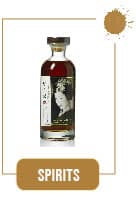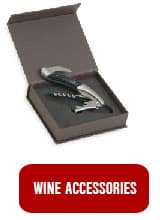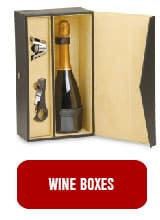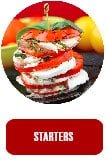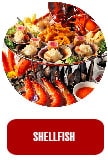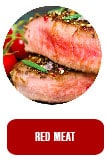No products
Catalog
- 1907
- 1918
- 1924
- 1925
- 1929
- 1931
- 1933
- 1934
- 1937
- 1938
- 1939
- 1940
- 1941
- 1942
- 1943
- 1944
- 1945
- 1946
- 1947
- 1948
- 1949
- 1950
- 1951
- 1952
- 1953
- 1954
- 1955
- 1956
- 1957
- 1958
- 1959
- 1960
- 1961
- 1962
- 1963
- 1964
- 1965
- 1966
- 1967
- 1968
- 1969
- 1970
- 1971
- 1972
- 1973
- 1974
- 1975
- 1976
- 1977
- 1978
- 1979
- 1980
- 1981
- 1982
- 1983
- 1984
- 1985
- 1986
- 1987
- 1988
- 1989
- 1990
- 1991
- 1992
- 1993
- 1994
- 1995
- 1996
- 1997
- 1998
- 1999
- 2000
- 2001
- 2002
- 2003
- 2004
- 2005
- 2006
- 2007
- 2008
- 2009
- 2010
- 2011
- 2012
- 2013
- 2014
- 2015
- 2016
- 2017
- 2018
- 2019
- 2020
FOOD & WINES PAIRING
How to Pair Old Wines: A Guide to Enhancing the Experience
Pairing old wines can be a bit tricky. As wines age, they lose some of their primary fruitiness and power, but they gain complexity and nuance. This means that the right food pairing should highlight these subtle flavors without overwhelming them. Here are some general tips to help you ...
How to Pair Old Wines: A Guide to Enhancing the Experience
Pairing old wines can be a bit tricky. As wines age, they lose some of their primary fruitiness and power, but they gain complexity and nuance. This means that the right food pairing should highlight these subtle flavors without overwhelming them. Here are some general tips to help you choose the right dish for an aged wine:
1. Keep the Cuisine Simple
When pairing with an old wine, it’s best to opt for simple dishes that don’t overpower the wine’s delicate aromas. Avoid overly complicated dishes or those with strong spices. A dish with high-quality, well-prepared meat, such as a steak or roasted lamb, will allow the wine’s flavors to shine through.
2. Choose High-Quality Meats
The delicate and complex flavors of an aged wine pair beautifully with well-sourced, high-quality meats. Look for cuts of meat that are rich in flavor yet not overly fatty or rich, as the wine's elegance might be overshadowed by a heavy dish. A roasted chicken, grilled beef, or a lamb rack will provide the right balance of texture and taste.
3. Avoid Strong Spicy Sauces
Spicy sauces can easily overpower the delicate nature of an older wine. Avoid dishes that are heavily spiced or covered in strong, bold sauces. Instead, opt for simple seasoning like herbs and butter that complement the wine's complexity without overwhelming it.
4. Focus on Grilled or Roasted Dishes
The earthy, nuanced flavors of grilled or roasted meats pair particularly well with older wines. The char and smokiness from grilling or roasting enhance the depth of the wine and allow it to express its aging potential. Think about a nicely grilled steak or roasted duck to accompany your bottle of aged wine.
5. Acidity is Key
Older wines, particularly reds, tend to have lower acidity. A dish with a slight acidity can balance the wine’s structure and bring out its best characteristics. For example, roasted meats with a citrus glaze or dishes featuring tomatoes can provide just the right amount of contrast.
6. Strong Cheeses Are a Great Match
Aged wines, particularly reds, can go wonderfully with strong cheeses. A well-aged Bordeaux can pair beautifully with a rich, creamy blue cheese, while an old Burgundy might complement a soft, creamy Brie. The cheese should be intense enough to stand up to the complexity of the wine but not overwhelm its subtler flavors.
7. Aim for Moderate Accompaniments
While side dishes are important, it’s best to keep them in check when serving old wines. Accompaniments should enhance the dish without taking the spotlight away from the wine. Light sides, such as roasted vegetables or a simple green salad, will elevate the experience without overshadowing the wine.
Subcategories
-
Aperitif
Guide to Choosing a Wine for the Aperitif
The aperitif is a moment of conviviality that prepares the palate for the meal to come. The choice of wine is essential to awaken the senses without overwhelming them.
1. Avoid Sweet Wines
Sweet wines, while pleasant, can weigh down the palate at the beginning of the meal. It's better to reserve them for dessert or a specific tasting. For an aperitif, you want wines that refresh and stimulate the senses.
2. Prefer White Wines, Rosé Wines, and Champagne
-
White Wines: A dry white wine is ideal for the aperitif. Opt for grape varieties like Sauvignon Blanc, which offers bright freshness, or unoaked Chardonnay for a rounder texture.
-
Rosé Wines: A dry rosé, well-chilled, is perfect for summer. Look for wines from Provence or Tavel for a balance of fruitiness and acidity.
-
Champagne: Nothing prepares the palate better than a fine Champagne. Brut, extra-brut, or rosé styles offer fine bubbles that awaken the aromas and enhance the refreshing sensation.
3. Wine and Charcuterie: The Perfect Balance
Charcuterie, rich in fat, needs a wine that can balance this texture:
- Light Red Wines: Avoid reds that are too tannic, as the fat will harden the tannins. Instead, opt for lighter, fruit-forward reds:
- A Pinot Noir from Burgundy, offering soft tannins and great freshness.
- A Chianti Classico, whose acidity complements the fattiness of the meat.
- A Barbera, which is fruity and fresh with just the right balance.
4. Other Pairings to Consider
-
Sparkling Wines: In addition to Champagne, explore other sparkling wines like Prosecco or Cava, which provide a lighter and often more affordable alternative.
-
Wines for Tapas or Appetizers: For small savory bites, a dry white wine like Muscadet or Alvarinho works well, offering freshness that cleanses the palate.
-
-
Starters
Guide to Choosing a Wine for an Appetizer
Choosing the right wine to accompany an appetizer can be tricky, but the goal is to balance flavors and textures to gently prepare the palate for the main course. Here are some suggestions for pairing wines with various appetizers.
1. Foie Gras
With its rich and creamy texture, foie gras pairs wonderfully with a sweet, luscious wine that complements its finesse. Wines to consider are:
- Sauternes: This sweet Bordeaux wine, with notes of honey, dried apricot, and exotic fruits, perfectly enhances foie gras.
- Monbazillac: Another sweet wine from Bordeaux, more affordable, with flavors of dried fruits and spices that pair beautifully with foie gras.
- Coteaux du Layon: A sweet wine from the Loire Valley, balanced and fruity, a great match for foie gras’s delicate flavors.
2. Pâtés and Terrines
Pâtés and terrines vary depending on the ingredients, but here are general recommendations based on the preparation:
-
Pork or Poultry: For pâtés or terrines made with white meat or pork, choose a light red wine with soft tannins. Some good options include:
- Beaujolais Villages: A light, fruity, and easy-to-drink wine, ideal for white meat-based appetizers.
- Swiss Pinot Noir: An elegant, subtle wine with red fruit notes, perfect for delicate terrines.
-
Game or More Pronounced Meats: If the pâté or terrine has a more pronounced game flavor, go for a more structured red wine:
- Crozes-Hermitage: A Rhône wine made from Syrah, light and spicy, perfect for game flavors.
- Coteaux du Languedoc: A southern French wine with complexity and aromas of dark fruits and spices.
- Humagne Rouge: A Swiss wine, fruity and spicy, which pairs well with game terrines.
- Sangiovese: An Italian wine with good acidity, excellent with game dishes, particularly those with herbs and spices.
3. Wine and Soups
In general, soups are not the best pairing with wine. The two liquid states (soup and wine) may clash, leading to a feeling of fullness early in the meal. If you do wish to serve a wine with a soup, opt for a light, crisp white wine like Muscadet or Alvarinho, which won’t overwhelm the palate.
4. Salads and Wine
Salads are a bit more difficult to pair with wine. Dressings, particularly those based on vinegar, can make the pairing tricky due to the acidity of the vinegar, which can throw off the wine. If serving a salad, it’s best to keep your aperitif wine to accompany the dish, rather than opening a new bottle.
General Tips:
-
White Wines: As a general rule, go for dry, fruity whites for lighter appetizers. Wines like Sauvignon Blanc, Chablis, or Riesling are versatile options.
-
Temperature: Ensure that wines are served at the correct temperature. Whites and rosés should be served chilled (10-12°C), while light reds should be slightly chilled (12-14°C) to preserve their freshness.
-
Shellfish
Guide for Choosing Wine with Shellfish and Crustaceans
Pairing wine with shellfish and crustaceans enhances the delicate flavors of the seafood while offering a refreshing contrast. The key is to balance the texture, flavors, and cooking method of the dish. Here’s a guide to help you choose the ideal wine based on the shellfish and crustaceans you're enjoying.
1. Raw Shellfish (Oysters and Similar Shellfish)
Raw shellfish, like oysters and other shellfish with a rich, fatty texture, pair perfectly with acidic wines that balance their richness. Their subtle, salty, and delicate taste requires a wine that is light, lean, and subtly aromatic.
- Muscadet: This Loire Valley wine, with its high acidity and light texture, is a classic pairing with oysters. The iodine notes in Muscadet enhance the natural saltiness of the oysters, creating perfect harmony.
- Chablis: A mineral wine from Burgundy, an unoaked Chardonnay, with its vibrant acidity and subtle citrus aromas, is an excellent choice for raw shellfish.
- Sancerre: This Sauvignon Blanc from the Loire Valley, fresh and crisp, pairs ideally with oysters or other delicate shellfish.
2. Cooked Shellfish and Crustaceans (Butter, Cream Sauces, etc.)
When shellfish or crustaceans are cooked in butter or served with creamy sauces, their texture becomes richer and more luxurious. This calls for a richer, fuller-bodied white wine, ideally one aged in oak barrels, to complement the richness of the dish.
- White Burgundy (Chardonnay): Wines like Meursault or Puligny-Montrachet, with their buttery texture and oak aging, pair beautifully with oysters cooked in butter or lobster in a creamy sauce.
- Châteauneuf-du-Pape Blanc: This rich, subtly spicy wine from the Southern Rhône is a wonderful match for shellfish dishes in creamy sauces or cooked in butter.
- Alsace Riesling: An Alsace Riesling, especially with some age, offers a balance of acidity, minerality, and richness that pairs well with shellfish in cream sauces or butter.
- Bordeaux Blanc: A Bordeaux Blanc (often a blend of Sauvignon Blanc and Sémillon) aged in oak offers a mix of acidity, fruitiness, and complexity that perfectly complements rich shellfish dishes.
3. Grilled or Roasted Shellfish
For grilled or roasted shellfish, the smoky, charred flavors can call for a more structured, slightly fuller wine.
- Graves Blanc (Bordeaux): A wine with a touch of oak and a crisp finish, perfect for grilled shellfish with a bit of char.
- Fumé Blanc (California): A smoky, oaked Sauvignon Blanc pairs wonderfully with grilled shellfish, adding depth to the flavor profile.
4. Crustaceans in General
- Lobster and Crab: These sweet, delicate meats pair well with full-bodied wines, balanced in acidity and with some oak aging. Wines from Burgundy, Alsace, or the Southern Rhône are excellent choices.
- Shrimp and Prawns: Shrimp’s sweet, briny flavor pairs well with a wide variety of wines, including Chablis, Muscadet, or Provence Rosé, which offer freshness and minerality.
Conclusion
When choosing wine to pair with shellfish and crustaceans, the goal is to find balance between the texture, flavor, and cooking method of the dish and the wine’s body, acidity, and aromatic profile. For raw shellfish, go for a crisp, mineral-driven white wine, while for shellfish cooked with rich sauces, opt for a fuller-bodied white with oak aging. These pairings will enhance the natural flavors of your seafood dishes and create a memorable dining experience.
-
Fish
Guide for Choosing Wine with Fish
Choosing the right wine to pair with fish depends on factors such as the texture of the fish, its cooking method, and any sauces or accompaniments. Here is a detailed guide to help you select the ideal wine for different types of fish.
1. Trout
Trout, with its delicate and subtle flesh, requires a fine white wine that won't overpower the fish's delicate flavor.
- Recommended wine: A Chasselas is an excellent choice. This wine is light, fresh, and offers the finesse that pairs well with the delicacy of trout. It can also be replaced with a Pinot Blanc or a light Sauvignon Blanc.
2. Pan-Seared Salmon (One-Sided)
Pan-seared salmon, especially when cooked on one side, has a rich taste and fat that calls for a white wine balanced in acidity to contrast with the richness of the fish.
- Recommended wine: A dry Riesling or a dry Vouvray. These fresh white wines, with vibrant acidity, help balance the fat in the salmon while highlighting its delicate aromas.
3. Grilled Salmon
Grilled salmon, with its smoky flavor and slightly caramelized crust, calls for a white wine that is fresher in acidity but with a bit more body than the previous options.
- Recommended wine: Humagne Blanc, with its roundness and acidity, or a light red wine from the Loire, such as a Cabernet Franc or Gamay, which adds fruity notes without being overpowering.
4. Smoked Salmon
Smoked salmon, with its pronounced character and rich texture, requires a wine that can contrast its smoky flavor while remaining fresh.
- Recommended wine: A Blanc de Blancs Champagne with low dosage, Chablis, or a Grand Cru Riesling. These dry white wines, with strong acidity and a marked minerality, enhance the salmon's flavors without weighing it down. Be cautious with oaky wines, as their bitterness may clash with the smoky notes of smoked salmon.
5. Buttered or Creamy Sole
Sole, when cooked with butter or in a creamy sauce, is a rich dish that requires a white wine with more structure to complement the richness of the sauce.
- Recommended wine: A white wine with both high acidity and volume, such as Chablis Grand Cru, Corton-Charlemagne, or Meursault. These wines, with a good balance of freshness and roundness, pair perfectly with the buttery texture and sweetness of the sole.
6. Bluefin Tuna
Bluefin tuna, with its firm texture and intense flavors, can be paired with both white and red wines that offer complexity and persistence to enhance the tuna's flavors.
- Recommended wine: A dry white wine, such as Sauvignon Blanc or Riesling, works very well with tuna. However, for richer preparations, light red wines like Pinot Noir or Gamay (in a light, fruity style) can also be a good option, offering complexity and freshness.
Conclusion
The wine chosen to pair with fish largely depends on the texture and flavors of the dish. For lighter fish like trout, opt for light and fine white wines. For fattier fish like salmon, the wine should have enough acidity to balance the richness. Finally, for smoked fish or those cooked with rich sauces, choose structured white or red wines. These pairings will enhance the natural flavors of your fish dishes!
-
Red meat dishes
Guide to Wine Pairings with Red Meat
When it comes to pairing wine with red meat, it's important to consider the richness and intensity of the meat as well as the preparation method. Here are some recommendations to help you choose the perfect wine for different red meats.
1. Duck Breast (Magret de Canard)
The rich flavor and fatty texture of duck breast require a wine with structure to balance the tannins and provide acidity.
- Recommended wine: A Médoc, powerful and tannic, is perfect for duck breast. Its richness complements the fat of the duck. If the duck is served with a sauce, opt for a Saint-Emilion or a Vacqueyras, which are rounder and more evolved wines that will enhance the dish.
2. Lamb
Lamb has a pronounced flavor that pairs beautifully with aromatic, spicy wines supported by well-integrated tannins. Cooking lamb in its juices or in a sauce requires a powerful, well-balanced wine.
- Recommended wine: A Châteauneuf-du-Pape, rich and spicy, is an ideal choice for roasted or grilled lamb. If the lamb is cooked in its juices, a wine with mild acidity like a Syrah or Brunello di Montalcino will balance the richness of the meat. For lamb in sauce, go for a powerful wine like a Ribera del Duero or Amarone to complement the flavors.
3. Beef
Beef, whether grilled, roasted, or in sauce, needs a round and full-bodied wine. The slight bitterness from grilling requires a wine with body and firm tannins.
- Recommended wine: For grilled or roasted beef, a mature Bordeaux or Saint-Emilion is a great choice. If the beef is served on its jus, a structured wine like a high-quality Chianti Classico will complement it well. For beef in sauce, choose a wine with firm tannins and a good body, like a Barolo or Barbaresco.
4. Pork
Pork, due to its subtle flavor, can be tricky to pair with tannic wines. It's best to choose a full-bodied wine with less tannin to avoid overpowering the delicate flavors of the pork.
- Recommended wine: A Côte de Beaune, from Burgundy, is a great option as it is round and smooth, and will balance the sweetness of the pork without overwhelming its natural flavors.
Additional Tips:
- When serving grilled or roasted red meats, opt for tannic and full-bodied wines that will match the intensity of the flavors.
- Meat served in sauce requires wines that are more structured, capable of supporting the richness of the sauces and enhancing the flavors of the meat.
With these tips in mind, you'll be able to select the perfect wine to elevate your red meat dishes. Don’t hesitate to reach out for personalized suggestions based on your preferences.
-
Gibier
Guide to Pairing Wine with Game Meats
Game meats, with their rich and robust flavors, require wines that can support and enhance the intensity of the dish. Here are some tips for choosing the perfect wine to pair with your game.
1. Bordeaux Wines
For game meats, especially those with a more pronounced flavor like venison or wild boar, opt for mature Bordeaux wines (aged between 10 and 15 years). These wines, with their softened yet still structured tannins, pair wonderfully with the richness of game meats.
- Recommended Wine: A mature Bordeaux (from Médoc or Saint-Émilion) is ideal. The softened tannins that develop over time provide a structure that complements the bold flavors of game.
2. Burgundy Wines
Burgundy wines, particularly those made from the Pinot Noir grape, are perfect for lighter game meats like pheasant or partridge. Their delicate fruitiness and subtle tannins highlight the nuanced flavors of these meats.
- Recommended Wine: A Pinot Noir from Burgundy, with its smooth texture and balanced acidity, is the ideal choice for pairing with lighter game meats or small poultry.
3. Rhône Valley Wines
For more flavorful game, such as wild boar or venison, wines from the Rhône Valley, particularly those made from the Syrah grape, provide the depth, tannins, and spice needed to balance the richness of these meats.
- Recommended Wine: A Châteauneuf-du-Pape or Crozes-Hermitage, known for their bold flavors and structured tannins, pair wonderfully with stronger game meats.
4. Other Pairings for Game
For smaller game like grouse or quail, lighter reds such as Gamay or even Côtes du Rhône work well. However, for richer game meats like wild boar or venison, opt for wines with more tannins and complexity, such as Barolo or Tannat from Madiran.
Additional Tips:
- Choose mature Bordeaux wines with softened tannins for game meats with bold flavors.
- Pinot Noir from Burgundy is perfect for lighter game, while for more intense meats like venison, go for more structured wines from the Rhône Valley or Italy.
- For an exceptional pairing experience, select wines that offer balance and subtlety, enhancing the flavors of the game without overpowering them.
-
Poultries
Guide to Pairing Wine with Poultry
When it comes to pairing wine with poultry, it's essential to consider the dish's preparation and sauce. Poultry dishes vary from light and delicate to rich and flavorful, so choosing the right wine is crucial. Here are some guidelines to help you choose the perfect wine for your poultry dishes.
1. Simple Roasted or Grilled Poultry
For roasted or grilled poultry, which has a delicate flavor, choose a wine that's round, elegant, and balanced to enhance the subtle taste of chicken or turkey.
- Recommended wine: A Burgundy white (such as Chablis or Meursault) or a Merlot. Burgundy wines, with their fruity aromas and round texture, complement the lightness of poultry. A Merlot is also a great choice due to its smoothness and fruitiness.
2. Poultry with Cream Sauce
When poultry is prepared with a cream sauce, a wine with good acidity and medium-roundness is needed to balance the richness of the sauce.
- Recommended wine: Puligny-Montrachet or Chassagne-Montrachet, both of which are white Burgundy wines that combine freshness with richness. These wines have the acidity to balance the creaminess while providing enough structure to match the dish. A Vin Jaune from Jura is another excellent choice, offering depth and complexity.
3. Poultry with Spices (e.g., Curry)
For spiced poultry dishes, such as curry, choose a wine that can balance the heat and enhance the flavors without overwhelming the dish.
- Recommended wine: Riesling (dry or slightly off-dry) or Pinot Gris from Alsace. These white wines offer freshness and minerality, making them an ideal match for spiced poultry dishes.
4. Poultry with Citrus (e.g., Lemon or Orange)
The acidity of citrus-based poultry dishes (such as lemon or orange roasted chicken) requires a wine that can complement the tartness while maintaining roundness.
- Recommended wine: Chablis or Sancerre (both dry and fresh whites) or a light Pinot Noir if you prefer red wine. These wines' freshness and slight minerality pair well with the acidity of citrus-based dishes.
5. Rich Poultry in Brown Sauce (e.g., Duck, Guinea Fowl)
Richer poultry like duck or guinea fowl, often cooked with flavorful brown sauces, pairs best with wines that are more structured.
- Recommended wine: Pinot Noir from Burgundy or a Côtes du Rhône. The delicate fruitiness and finesse of Pinot Noir complement the richness of these meats, while the spicier, fuller wines from the Rhône provide the depth needed for more complex flavors.
6. Holiday Turkey
For a traditional holiday turkey, often served with rich accompaniments like chestnuts or stuffing, choose a wine that can balance the richness of the dish.
- Recommended wine: Chardonnay from Burgundy or a light red wine such as Beaujolais Villages or Pinot Noir. Chardonnay offers fruity aromas and a buttery texture that pairs well with turkey, while Beaujolais, with its lightness and fruitiness, complements the complexity of the dish.
Additional Tips:
- For lighter poultry (such as chicken or turkey), opt for fine white wines or light reds.
- For richer poultry or those prepared with sauces, a more structured wine (like Burgundy or Côtes du Rhône) will better support the complex flavors.
With these tips, you can easily choose the perfect wine to accompany your poultry dishes. Don’t hesitate to reach out if you need personalized recommendations or advice.
-
Cheeses
Guide to Choosing the Perfect Wine for Cheese
Wine and cheese pairing is a classic in gastronomy, but finding the perfect combination can sometimes be tricky. While red wine is the most common choice, there are also regional pairings that enhance the flavors of both wine and cheese. Here are some tips to help you choose the ideal wine to accompany your cheese.
1. Pressed-Curd Cheeses (e.g., Comté, Gruyère)
Pressed-curd cheeses like Comté or Gruyère have fruity and sometimes slightly nutty flavors that pair wonderfully with wines that share a similar profile.
- Recommended Pairing: Comté pairs wonderfully with a vin jaune from Jura. Its nutty and dried fruit aromas complement the depth of Comté, adding length and complexity to the experience.
2. Goat Cheeses
Goat cheeses, often tangy and fresh, require a white wine that balances their sharpness and freshness.
- Recommended Pairing: A Sancerre or Vouvray from the Loire Valley is perfect for pairing with goat cheese. Their acidity and citrus notes beautifully complement the vibrant flavor of goat cheese, without overpowering it.
3. Melted Cheeses (e.g., Raclette, Fondue)
Melted cheeses like raclette require a wine that can balance the richness and fat content.
- Recommended Pairing: A red wine from Savoie, such as Roussette, is ideal. Its light fruitiness and freshness contrast perfectly with the creamy texture of melted cheese, offering a touch of finesse to the pairing.
4. Soft-Ripened Cheeses (e.g., Brie, Camembert)
Soft-ripened cheeses like Brie or Camembert require a wine that offers balance without overpowering their delicate, creamy texture.
- Recommended Pairing: A Chablis or a Brut Champagne, particularly a Blanc de Blancs, is a perfect match. The wine's freshness and acidity highlight the creamy texture of the cheese while keeping its delicate flavors intact.
5. Blue Cheeses (e.g., Roquefort, Bleu d'Auvergne)
Blue cheeses, which are bold and tangy, require a wine that can counterbalance their intensity.
- Recommended Pairing: A sweet or fortified wine such as Sauternes or Port is the ideal match. Their richness and aromas of candied fruits complement the salty, pungent flavor of blue cheese, balancing its strong character.
6. Bloomy-Rind Cheeses (e.g., Saint-Nectaire, Brie de Meaux)
Bloomy-rind cheeses have a creamy texture and delicate flavor that pair well with wines that are fruity and elegant.
- Recommended Pairing: A prestigious red Bordeaux wine like a Margaux or Saint-Émilion brings fruity aromas, floral notes, and soft tannins that beautifully complement cheeses like Saint-Nectaire or sheep's milk cheese from the Pyrénées. The harmony between the cheese’s softness and the wine’s structure is exceptional.
7. Fresh Goat Cheese
Fresh goat cheeses, such as goat cheese logs or fresh cheese curds, have a tangy, fresh flavor that pairs well with crisp wines.
- Recommended Pairing: A dry white wine from the Loire Valley, such as Muscadet, is the perfect complement. The wine’s freshness and zest will enhance the tanginess of the cheese without overshadowing it.
8. Washed-Rind Cheeses (e.g., Munster, Époisses)
Washed-rind cheeses are often stronger and more aromatic, requiring a bold wine that can balance their intensity.
- Recommended Pairing: A robust red wine like a Médoc is a perfect match. With its dark fruit aromas, spicy notes, and tannic structure, it balances the richness of the cheese and enhances its flavor without being overwhelmed.
-
Dessert
Guide for Choosing the Right Wine with Dessert
Pairing wine with dessert can elevate the tasting experience, but it's important to understand how the flavors complement each other. While the combination of sweet wines and desserts generally works well, there are a few key guidelines to follow for a successful pairing. Here's a guide to help you choose the perfect wine to accompany your dessert.
1. Chocolate or Coffee Desserts
Chocolate or coffee-based desserts have a natural bitterness that requires a wine capable of complementing these intense flavors without overpowering them.
- Recommendation: For a chocolate dessert, opt for a mature red wine, rich in roasted and toasted aromas, such as Pommard. The tannic structure of this wine, along with its dark fruit and earthy flavors, pairs perfectly with the richness of chocolate, balancing its bitterness. For coffee-based desserts, a similar wine may work, but also consider options like Banyuls or Port.
2. Fruit Desserts
Fruity desserts, such as a berry tart or a fresh fruit salad, require a wine that is light and fresh but also enhances the sweetness of the fruit.
- Recommendation: A light sweet wine like Sauternes, Jurançon, or Muscadelle is a great choice. These wines provide a harmonious sweetness that complements the fruit aromas, enhancing them. If you prefer a fresher wine, a slightly sweet Riesling can also work well.
3. Ice Creams or Sorbets
Frozen desserts, like fruit ice creams or sorbets, are refreshing choices that call for a wine that is also fresh but sweet enough to balance the fruit flavors and creamy textures.
- Recommendation: A Champagne Blanc de Blancs demi-sec pairs wonderfully with fruit ice creams or sorbets. The bubbles provide a light and airy texture, while the sweetness complements the fruit's freshness. You can also consider a Moscato d'Asti or Demi-sec Cava for a light and refreshing match.
4. Cream-Based or Cheese Desserts
Desserts with cream, such as crème brûlée or cheesecake, have a richness that requires a wine capable of cutting through the richness while adding a sweet touch.
- Recommendation: A sweet wine like Tokaji Aszú or Gewürztraminer Vendanges Tardives works wonderfully with these desserts. The richness of these wines, with their notes of candied fruit and honey, balances the creamy texture of the dessert. Sauternes is also a classic and elegant choice.
5. Red Fruit Tarts
Red fruit tarts, with their acidity and sweetness, need a sweet and fruity wine that won't overpower the lightness of the fruit.
- Recommendation: A Champagne Rosé demi-sec or sec is an excellent choice. Its sweetness and fruity aromas will complement the red fruit tart without overshadowing its freshness. For a more classic option, a Muscadet or Vin de France doux can also provide a nice balance.
Additional Tips:
- Avoid wines that are too young for desserts. They may lack the complexity needed for a successful pairing.
- The wine should be sweeter than the dessert to avoid it seeming too dry or acidic in comparison.
- Play with texture and aromas: Sparkling wines (like Champagne) work well with light and airy desserts, while richer, more oaky wines pair better with more indulgent desserts.
By following these recommendations, you can create memorable wine and dessert pairings that will add a touch of refinement and harmony to your meals. Don't hesitate to ask for advice to personalize your selection based on your preferences and the specific desserts you're serving.
-
Pasta, rice and pizzas
The ideal wine to pair with these dishes is dependant on which sauce you serve it with, but generally a red wine of average tannins and good acidity is the most appropriate such; as a Chianti, made uniquely from the Sangiovese grape variety.
-

-

Santenay 1er Cru Clos de la Comme 2014 -...
Françoise et Denis Clair Santenay 1er Cru Clos de la Comme 2014
27,05 CHF -

Clos Rougeard les Poyeux 2012 - Frères...
2012 Clos Rougeard Saumur-Champigny Les Poyeaux, Loire, France
259,45 CHF -

Corton GC 2012 - Château de Meursault
2012 Domaine du Chateau de Meursault Corton Grand Cru, Cote de Beaune, France
85,00 CHF 100,00 CHF -15%Reduced price! -

-

-

-

Clos Rougeard Saumur-Champigny 2012 Frères...
2012 Clos Rougeard Saumur-Champigny, Loire, France
210,80 CHF -

-

Blanc des Millénaires 2006 - Charles...
Blanc des Millénaires 2006 Charles Heidsieck
121,60 CHF 135,15 CHF -10%Reduced price! -

Epesses "Réserve du Domaine" 2019 - le...
domaine Aucrêt Epesses "Réserve du Domaine" 2019
17,55 CHF -

100 % in stock
All of our products are avalaible on stock
Quick delivery
Your order will be shipped in 48 hours in a packaging provided for this purpose
Free delivery
Free shipment fees for orders over 1000 CHF (in Switzerland)
Free pickup in Geneva
In order to avoid shipping fees, your order can be picked up directly in our cellars or shop in Geneva
Your fidelity rewarded
2 % off







